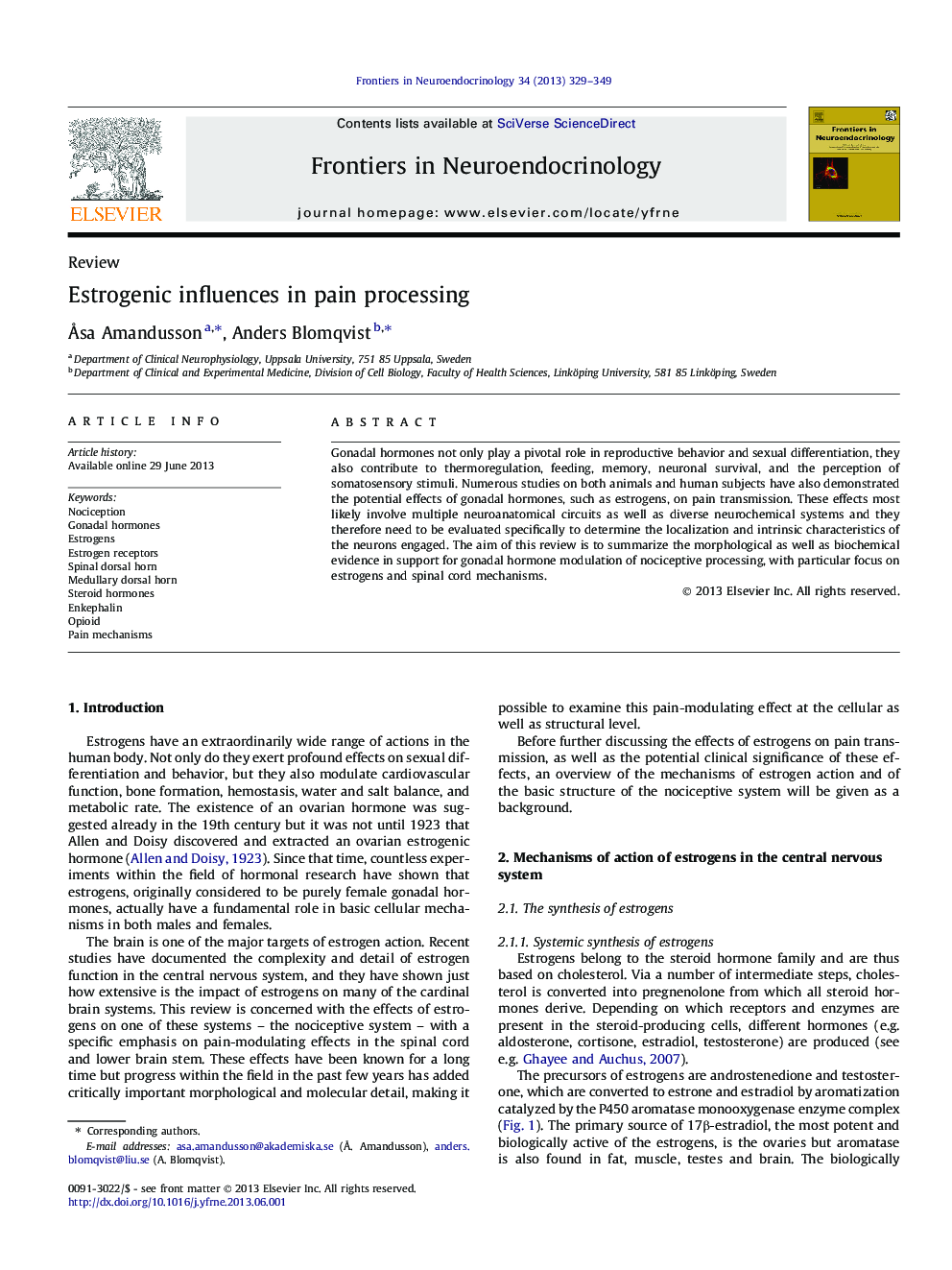| Article ID | Journal | Published Year | Pages | File Type |
|---|---|---|---|---|
| 2799304 | Frontiers in Neuroendocrinology | 2013 | 21 Pages |
•Pain transmission is modulated by gonadal hormones in animals and humans.•Estrogens modulate pain transmission at different levels of the nervous system.•Hormonal modulation of pain makes use of several neurotransmitters and intracellular pathways.•The effect of estrogens on endogenous opioids in the spinal dorsal horn is of major importance.•Hormonal modulation of pain may need to be considered in the clinical setting.
Gonadal hormones not only play a pivotal role in reproductive behavior and sexual differentiation, they also contribute to thermoregulation, feeding, memory, neuronal survival, and the perception of somatosensory stimuli. Numerous studies on both animals and human subjects have also demonstrated the potential effects of gonadal hormones, such as estrogens, on pain transmission. These effects most likely involve multiple neuroanatomical circuits as well as diverse neurochemical systems and they therefore need to be evaluated specifically to determine the localization and intrinsic characteristics of the neurons engaged. The aim of this review is to summarize the morphological as well as biochemical evidence in support for gonadal hormone modulation of nociceptive processing, with particular focus on estrogens and spinal cord mechanisms.
